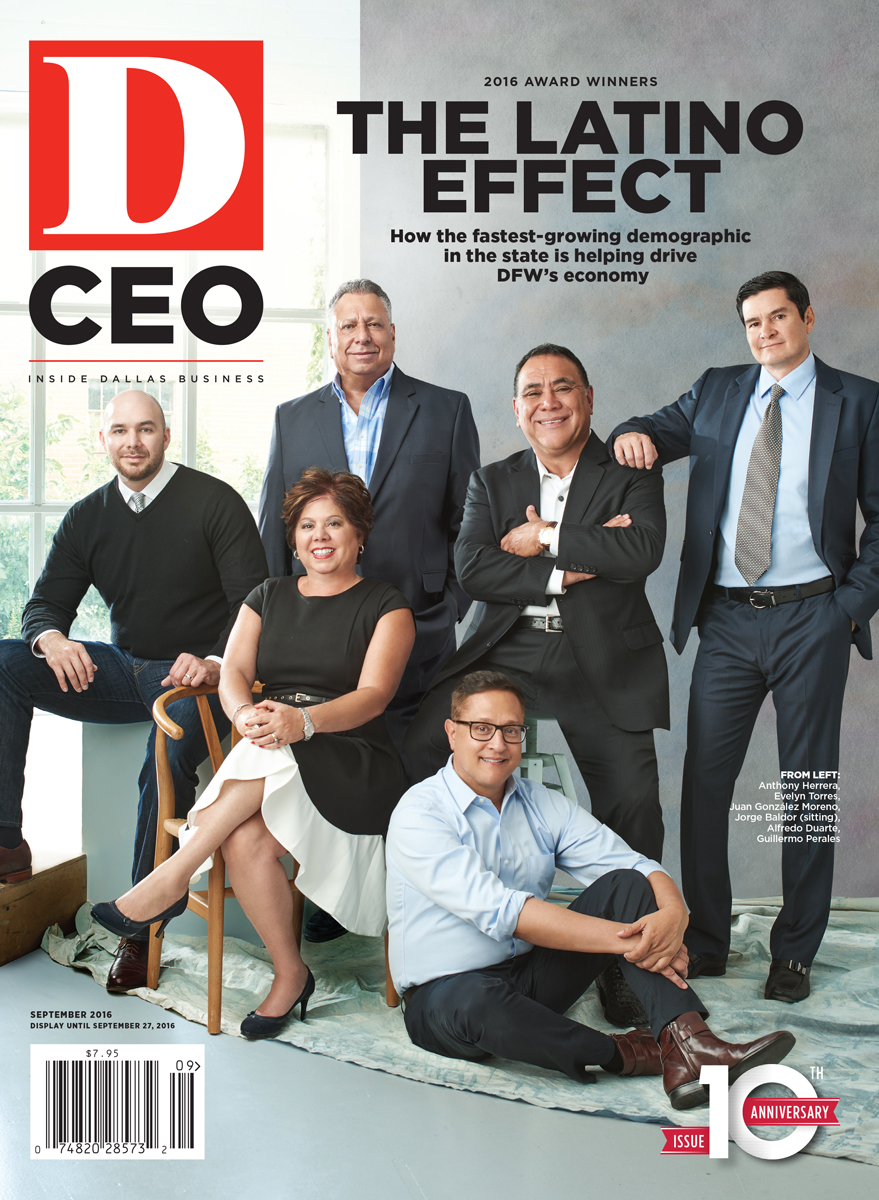When I began covering commercial real estate in Dallas in 2000, I remember attending an industry event and being struck by how few women and minorities were in the crowd. Not much has changed since. In the who-you-know world of commercial real estate, it’s still very much a white man’s game.
The situation seems to be more pronounced in Dallas, compared to northern markets like Chicago and New York. But it’s certainly not unique to Dallas. Commercial real estate has lagged other professions in becoming more diversified. For years, information on the topic was anecdotal. Hard data wasn’t revealed until August 2013, when the Commercial Real Estate Diversity Report was released.
The study looked at the hiring pool—college-educated individuals between the ages of 25 and 64—and discerned that the industry was made up of 39.5 percent white women, 36.7 percent white men, and 23.8 percent black, Asian, or Hispanic men and women. It then analyzed employment information on five job categories in commercial real estate—senior executives, mid-level managers, professionals, technicians, and clerical workers—and found that white men hold the majority of jobs in all categories except clerical workers.
Nearly 80 percent of all senior-level executive positions are held by white men, followed by white women (14.1 percent), Hispanic men (2.9 percent), black males (1.3 percent), and Asian men (1.6 percent). Minority women hold fewer than 1 percent of senior-level posts. The numbers change only slightly when you drop down to the mid-level manager level, with white men holding about 70 percent of the jobs, white women holding about 17 percent, Hispanic males 5 percent, black males 2 percent, and the rest held by Asian men and minority women. White men are again the majority at the professional level (nearly 60 percent), with white women holding about 22 percent of jobs, Asian men 4.4 percent, Hispanic men 4.2 percent, Asian women 3.4 percent, black males 2.4 percent, and Hispanic women and black women (2 percent each).
Although real estate is big business in Dallas, it’s a relatively small community.
The numbers reflect what Lawrence Gardner has experienced. After getting an MBA degree from the University of Michigan, he was planning to take a brand-management post in California when he was approached about a job at Trammell Crow Co. Intrigued, he switched gears and moved to Dallas to get into commercial real estate. Gardner, who is black, found very few minority peers. “Although there were many talented people from different backgrounds and several women who had made great strides in the industry, with regard to ethnic diversity, it was a lonely place,” he says.
After achieving success at Trammell Crow and at Cushman & Wakefield, Gardner launched his own real estate services company, OMS Strategic Advisors LLC. He says a lot of big firms want to become more diversified, to more closely mirror the clients they serve. But it’s tough. Talented minority graduates are being highly recruited by other industries, most of which offer better career tracks to executive positions. Then there’s the ramp-up time required to make it in commercial real estate. “The appeal of a $35,000 draw or using your personal funds is a deterrent,” Gardner says. “Also, a lack of mentorships for those who do enter the industry has led to an early exit by many minorities.”
Gardner and his wife and business partner, Lisa, are trying to do their part. They recently hired an African American broker who had the desire and talent to be successful. “He just needed an opportunity,” Gardner says.
The REAP Program
Also trying to effect change are Tamela Thornton, a co-founder at E Smith Realty Partners, and Lori Stone, executive director of NAIOP North Texas. The two are overseeing implementation of the Real Estate Associate Program in Dallas. Launched in Washington, D.C., in 1998, its mission is to help talented minorities break into commercial real estate. Applicants must have a four-year college degree and three to five years of career experience. Program leaders interview candidates to get to a class size of about 30. The 10-week program, which costs $750, includes networking opportunities, career-strategy sessions, property tours, and 20 evening classes where industry experts speak about a particular segment of the business, from site selection and development to leasing, sales, and asset management.
“Dallas is a major real estate market,” Thornton says. “The positive is there’s a lot of activity. The negative is, unless you’re part of that network—the SMU, UT, TCU network—it’s very hard to get plugged in. What we’re trying to do is broaden that network.”
Although real estate is big business in Dallas, it’s a relatively small community of industry professionals. Unless you know someone, it’s hard to get a foot in the door, says Stone: “Internships go to someone’s son or daughter, or a friend’s son or a kid in the neighborhood.”
REAP didn’t come to Dallas until last year. The 2016 program gets underway in September. For Shicara Hollie, who was a member of the inaugural class, the investment in REAP paid off. An African American with a finance degree from the University of North Texas and an MBA from Texas A&M-Commerce, she did accounting work for Texas Instruments and Samsung. “I took some real estate classes as an undergrad, and fell in love with it, but I didn’t have the guts to pursue a career in it,” says Hollie. “REAP was transformative. We were exposed to some of the top companies—CBRE, JLL, Duke Realty, McDonald’s Corp., and Walmart. They showed me a side of real estate I never knew about before.”
Her participation led to a job at CBRE, where she’s a platform knowledge manager. Prior to REAP, she sent résumés on a regular basis to all the big firms in town, and never once got a response. “They went into a black hole,” she says. “I had the education, I had the experience. I just needed that link, that ‘who you know.’”
Angel Radcliffe, who also participated in the 2015 class in Dallas, is still looking for a job in real estate. She has a bachelor’s degree from Lincoln College and an MBA in finance from Strayer University. For the past 10 years she has been working in finance, streamlining accounting processes, and doing consultant work for entrepreneurs. Her goal is to work for one of the larger commercial real estate firms. She (and others interviewed for this story) says many companies say they want to diversify, but don’t take action. “I want everyone to know that 1) there is a problem and 2) REAP is here to help solve the problem, to educate companies and groom minorities for the industry.”
Duke Realty got involved with REAP in 2003. The Indianapolis-based firm was looking for a way to diversify its workforce and help recruit more minorities. Jeff Thornton, senior vice president of Duke’s Texas operations, serves on the program’s board and teaches classes in Dallas. REAP has given him a chance to give back to an industry that has been good to him over the past 20 years, he says. The fact that it specifically targets multicultural professionals lets him help lead change. As a direct result of its participation in the program, Duke recently hired Sam Abusaad, a REAP student, as a leasing representative.
Dallas appraisal executive Chuck Dannis has taught the same real estate class at SMU’s Cox School of Business since 1988. He says minorities are underrepresented in the industry, across all ethnicities. But things are improving he says, and clients and demographic shifts are speeding up the evolution. “Every semester for the last five years or so, I start off with the same line I hear at every real estate conference I go to: ‘All of us in real estate want to know where you 77 million millennials are going to want to live, work, play, eat, shop … and whatever else you do.’ What is important to consider is that the 77 million behemoth cohort is very diverse: 19 percent Hispanic, 14 percent African-American, and 5 percent Asian,” Dannis says. “That is one big, emerging real estate market that will need real estate professionals that speak their language (in some cases, literally) and can move effectively and competently across multicultural boundaries.”






